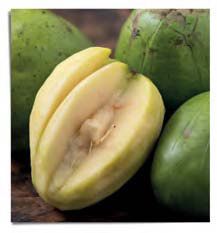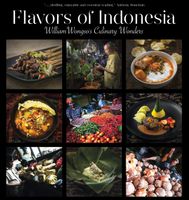Save 25% on ckbk Premium Membership with code FALLFLAVORS 🍁
Golden Apple
Kedondong
Published 2016

Spondias dulcis is also known as ambarella, golden apple, wi-tree and otaheite apple. It is a tropical tree that is native to Melanesia and Polynesia. This tree can reach up to 40 feet, some books claim as high as up to 60 feet, and has deciduous foliage in areas with dry seasons. The ambarella grows on all types of soil, as long as they are well-drained. It bears edible yellow-green fruit. The fruit may be eaten raw; the flesh is crunchy and a little sour. In Indonesia and Malaysia, it is eaten with shrimp paste. It is used as an ingredient in mixed fruit salad or rujak buah, and may also be juiced, and despite its unique blend of sweet and bitter, kedondong bears vitamin C equivalent of the orange. Mostly though, in our culinary field, kedondongleaves are steamed and eaten as a vegetable with salted fish and rice, and also used as seasoning for various dishes. They are sometimes cooked with meat to tenderize it. Both traditional and modern grocery markets carry kedondong, usually sold in kilogram units. Proper storage in a cold and dry place will allow the fruit to last up to one or two months before the skin starts wrinkling and the seed becomes less tender.
Become a Premium Member to access this page
Unlimited, ad-free access to hundreds of the world’s best cookbooks
Over 160,000 recipes with thousands more added every month
Recommended by leading chefs and food writers
Powerful search filters to match your tastes
Create collections and add reviews or private notes to any recipe
Swipe to browse each cookbook from cover-to-cover
Manage your subscription via the My Membership page
Part of
Advertisement
Related Recipes
-
-
-
-
Related Reference
-
-
-
-
Advertisement



